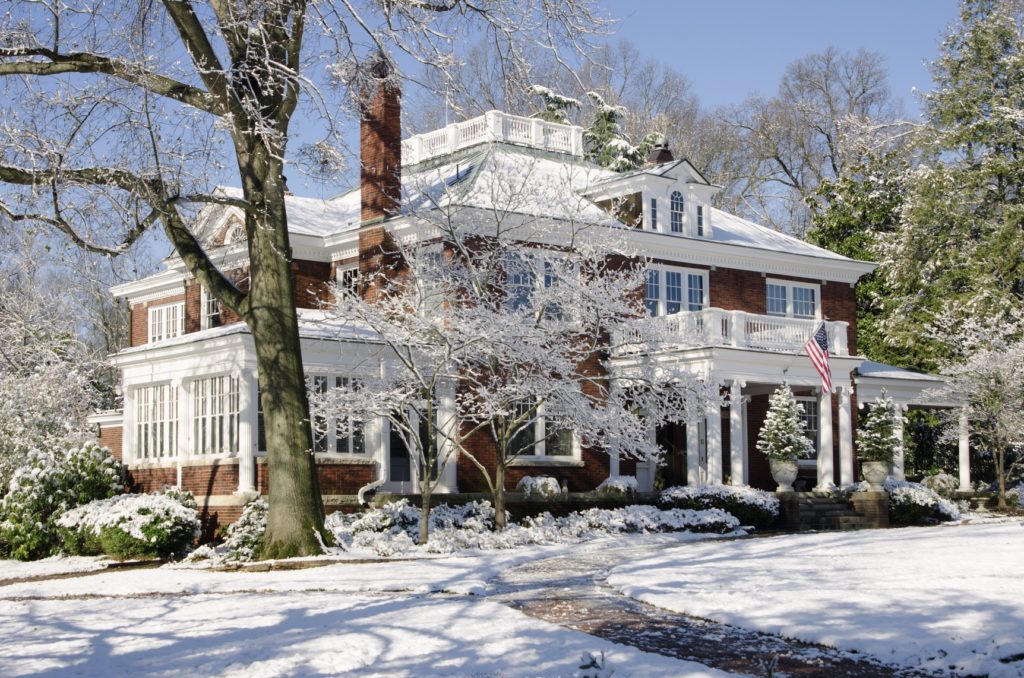
The winter landscape sure is a sight to see in many parts of Washington State. There is something so otherworldly when this otherwise emerald region becomes still and blanketed with snow. Although the temperatures can be cold, there is plenty to look forward to such as winter sports and festivities.
Winter, however, brings a set of challenges for your home. The season can cause costly damages that can dent the household budget significantly. So, before the temperatures drop any lower and snow completely covers your community, take the necessary precautions to protect your home.
-
Drain water from your outdoor water systems
Water, when it freezes, expands. Such an event can spell extensive damage to pipes that have leftover water during the winter. To avoid this, remember to drain all of your outdoor water systems well as soon as possible. This includes outdoor faucets and hoses, as well as sprinklers. It would also be wise to locate your home’s water shut-off valve so you can immediately turn it off or on in case of an emergency.
Outdoor water systems are not the only features to pay close attention to pipe-related winter concerns. Pipes run through the entire home, and when they burst because of ice, leaks can happen and cause even more damage. Locate parts of the home that are unheated and insulate these areas to prevent the pipes from freezing. These areas include the basement, attic/s, as well as crawl spaces.
-
Clean the gutters
It takes low temperatures for water to freeze, but ice can melt just as easily during a relatively warm or sunny winter day. Make sure all that melted water and ice has space to flow by cleaning all of the gutters in the property. Remove debris and, if you can, install gutter guards to ensure your home’s gutters remain clear throughout the entire winter season.
Having clean gutters can prevent ice damming. It is essentially a build-up of ice that can occur on roofs and gutters. With the waterways blocked, melted ice and water might find other ways to flow, eventually seeping its way into your home.
-
Seal cracks with caulking
Cold wind and moisture can find its way inside your home. Fortunately, you can prevent this from happening. Identify as many cracks and wall openings as possible and seal them with caulking to intercept cold wind and moisture trying to seep into your home.
As much as you want to prevent cold wind from entering your home, you will want to prevent heat from getting outside. For that, turn to your windows and doors. Use caulking and weather stripping to keep the inside of your home warm and toasty especially during freezing days and nights.
If you have an older home or have single-pane glass windows and doors, caulking and weather stripping might not be enough. For the long run, consider replacing them with double-pane windows and insulated doors. These will help keep the heat in and lower your winter energy costs as well.
-
Trim the trees
Winter can wreak havoc on the weaker trees in your garden or yard. As snow and ice piles on the branches, they might snap off. They can either cause someone injury as well as damage your home and other property. So, before the season gets worse, take the time to trim the trees and remove dead branches if there are any.
If you are worried that trimming the trees might lower your home’s curb appeal, don’t be. Trees are incredibly resilient, even the weaker ones. Come warmer weather, they will bloom again and be healthier than ever.
-
Maintain your heating system regularly throughout the winter
During this season, your heating systems will be working on overtime. Regular maintenance is a must, not just to make sure they are in proper working order, but to lessen risks of fire and smoke damage.
According to the National Fire Protection Association, residential fires are common during the winter. One simple safety precaution you can do is to keep any flammable items away from sources of heat, such as stoves, furnaces, fireplaces, and space heaters. Furthermore, do not forget to change the filter of your furnace to keep it efficient.
As for the fireplace, regular cleaning is a must. Before you light it for the first time this winter season, rid the fireplace of soot, debris (some of which can be combustible), and insects. Ideally, fireplaces and chimneys should be thoroughly cleaned once a year.
Check The Groesbeck Group’s blog for winter-related and socially distant things to do in Anacortes, WA. For more real estate tips and information, contact the team today at 360.941.3734 or Info(at)JeanGroesbeck(dotted)com.

